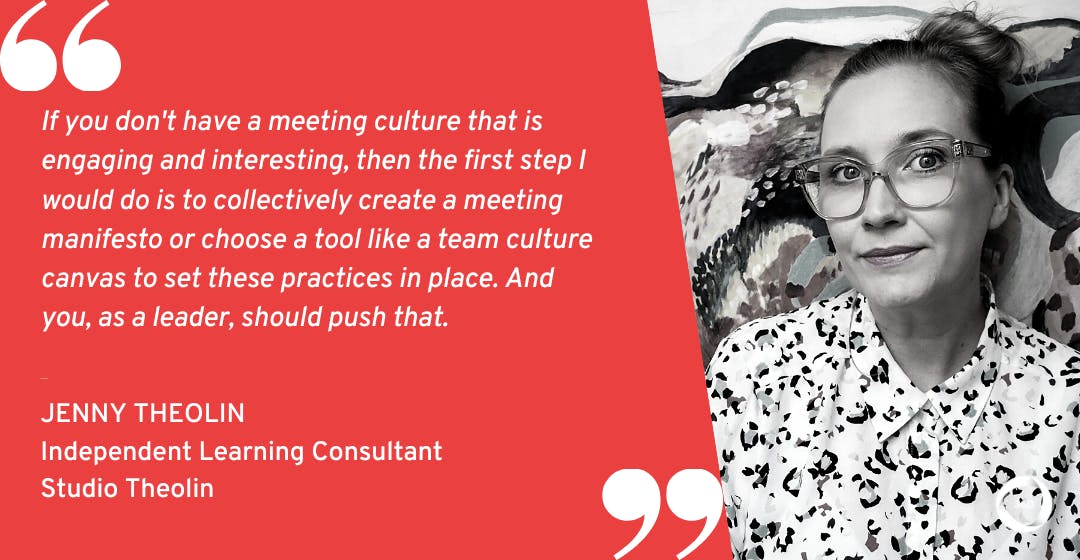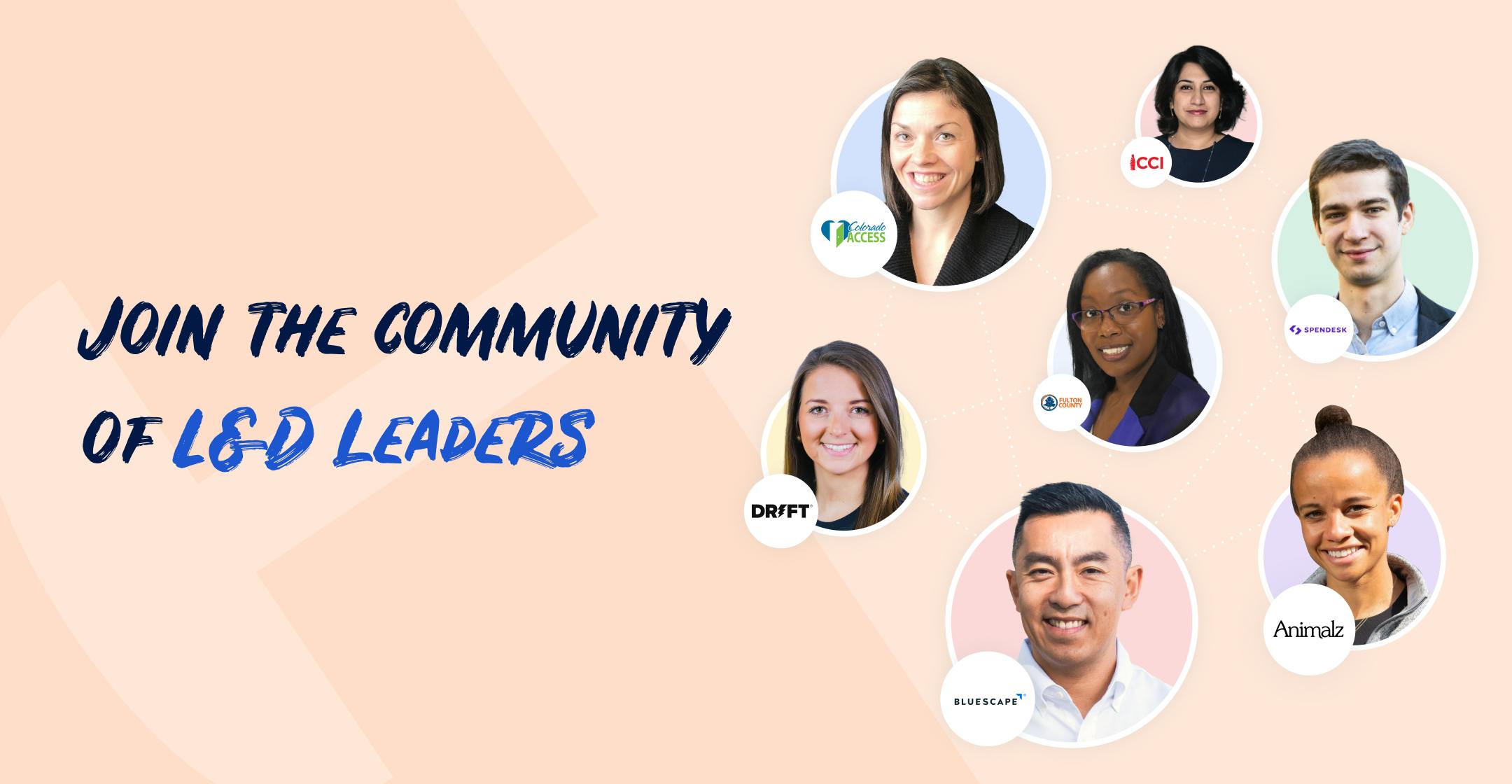

Training & Learning
The Unsung Hero: Studio Theolin’s Leadership Facilitation Approach to Tackling Boreout
As L&D leaders, we’re all aware of the negative effects of burnout in the workplace. But what if burnout isn’t the main issue at work we should be worrying about? What if boredom, or “boreout” as it’s now been termed, is actually the real threat to wellbeing and retention?
With this in mind, what can we do as learning professionals to curb boreout ? One way is by focusing on making daily activities such as meetings and conferences more engaging.
In this interview, I speak with Jenny Theolin, Independent Learning Consultant and Owner and Founder of Studio Theolin, about how she helps her clients raise employee engagement in meetings and conferences by empowering leaders to facilitate a more fun and happy environment.
Read on to hear how Jenny tackles boreout, the combined challenge of workplace boredom and burnout, her approaches to making meetings and conferences more engaging, and some expert tips on creating a fun and engaging company culture.
Loving what you’re reading? Come and join the L&D Collective for more great learning insights, resources, and events!
Boreout: the challenges of boredom and burnout combined
Above all the challenges that come with hybrid work and post-pandemic issues, Jenny finds that the big challenge L&D still needs to address is boredom at work.
“I recently read about a new word in Forbes,” she explains. “ Boreout—the combination of burnout and boredom at work. When I looked a bit deeper, a study in the US on boredom found that one in three people leave their jobs because they're bored, and then you have this other group leaving because they're exhausted.”
“And I was thinking, how can we, as learning professionals, help empower leaders to facilitate a more fun and happy environment? So, that's something that I've been working on quite a bit recently.”
Jenny finds that apart from being role models and ensuring that everything we do has a sense of excitement–and not being one of the three–we can also try to get senior leaders to practice facilitation.
“Facilitation is the unsung hero,” Jenny says. “This secret superpower weapon is often brought into the organization, but I believe leaders who have these skills can engage their co-workers and their teams on a completely different level.”
Instead of bringing training facilitation in from the outside, Jenny finds it is more impactful when leaders in the organization model the fun and facilitation in their day-to-day activities with their teams.
So, how do you start to model facilitation in a fun and engaging way to tackle employee boreout?

50 Ice Breakers for Virtual Meetings
By providing your contact info, you agree to receive communications from 360Learning. You can opt-out at any time. For details, refer to our Privacy Policy.
Meetings don’t have to be boring
Apart from providing facilitation training for leaders, in Jenny’s experience, helping ramp up leadership facilitation starts with embedding it within company culture.
Organizations can address boreout by focusing on what can be one of the most tedious corporate activities: meetings. “When you hear the word meeting, the word fun doesn’t usually spring to mind,” explains Jenny. “It's so easy to think, ‘Ah, another meeting,’ but what if this meeting was facilitated with joy, and it was creative?”
Jenny finds that you can flip the expectation that a meeting will be boring on its head if you measure the impact through the number of ideas that arise from it and use survey tools to test how the quality of the meetings changes. Meetings that are well-defined with the purpose of a designed learning experience are the ones people would want to attend.
“If you don't have a meeting culture that is engaging and interesting, then the first step I would do is to collectively create a meeting manifesto or choose a tool like a team culture canvas to set these practices in place. And you, as a leader, should push that.

Related: Your Approach to Leadership Training is Broken—Here’s How to Fix It
Design and pledge to your team’s meeting manifesto
Jenny has also worked with teams who knew they had too many ill-designed meetings.
In her process, she works with the team, and they create a pledge of how they will conduct meetings and make them engaging. This could include the smallest of expectations, like arriving on time for the meeting.
“You set what matters to you as a team,” she says, “and then everybody feels they've contributed to the meeting culture. You have a design in place where everybody has a role in the meeting, and you have a facilitator of that meeting. This could be the manager or someone practicing self-leadership.”
As Jenny explains, “I think it's really important to find a good structure so that it's sustainable and you won't burn out or bore out.”
I think it's really important to find a good structure so that it's sustainable and you won't burn out or bore out.
Jenny’s process highlights the benefits of upskilling from within. By ensuring every attendee has a role in a meeting, the ratio of new ideas generated increases per attendee because they are no longer passively absorbing information from a meeting but collaboratively engaging with each other and sharing knowledge.
Next, Jenny uses the power of creativity to empower leadership to pursue innovative solutions to tackle boreout.
Conferences don’t have to be the same old thing
One of the busiest times for Jenny’s L&D practice was during the pandemic because many of her clients were suddenly in a flux of how to facilitate conferences.
“For example,” she explains, “I helped facilitate a sales conference in 2021 for a large Swedish food brand owner. When you say sales conference, it doesn't sound like that much fun. However, as it was during quarantine, we created a ‘quanference’.
Naming and packaging the conference differently and then facilitating exercises sprinkled with fun and engaging activities bonded the group beyond the usual PowerPoint slides and the standard yearly activities.
“Whether it's a sales conference, a virtual meeting or real life, or any part of your working process, there are little tricks that you can do that increase morale,” says Jenny.
A second example is two sales conferences Jenny facilitated for her clients who created their own video invitation that was super creative and fun.
“And for the next year,” she explains, “one of the clients got their teenage daughter to do a Tiktok video of him inviting everybody to the conference. He would never have done that if we weren’t in this flux of testing and learning new things. So, there is a lot we can learn from the past few years in terms of engagement.”
“Yes, some of this is seen as ‘corporate fun’,” she adds, “but I think if it's done together with the group and is co-designed, that's different from the stereotypical let's get a facilitator in to do some team building trust fall exercises.”
If you’re looking to stop boredom, burnout, or boreout in your organization, Jenny has three expert tips to consider as you start designing your strategy.
Related: 6 Ways You Should Be Training Your Sales Team (for Better Business Outcomes)
Expert tips on feedback, belonging, and fun
In Jenny’s experience, many L&D professionals are similar in that we teach, talk about, and are experts in feedback, but we rarely actually give each other feedback.
“A lot of leaders have done a plethora of leadership programs, and they're fully aware of the power of feedback, but they don't practice it, and that's where the power of facilitation comes in. Whether you create micro feedback all the time or an appreciation day, that can also help engage because it's fun to know we're doing a good job.”
And next, because fun can mean so many different things to different people, Jenny emphasizes how important developing a culture of belonging is within any organization.
“The independent think tank, Coqual, researched belonging,” she explains. “They found four things that people need to feel like they belong at work: being seen for your contributions, being connected to others in the organization, feeling pride for your work and the company as a whole, and being supported by your leadership and your team.
“I think there are so many nuances of how we can inspire leaders to take on this sort of fun at work and do it in a thoughtful, inclusive way.”
When L&D teams are thinking about a learning experience, we don't necessarily focus on or automatically think of fun, but Jenny finds that fun helps move learner experiences towards something they remember.
“There's a good TED Talk where Catherine Price talks about how happiness and fun are related,” she says. “When we think of when we were last happy, we were probably having fun. It's not on people's agenda because maybe it’s cringy, but I think it's really important.”
Thanks to Jenny for sharing her insights and experience with us!
For more expert advice and insights to help boost your L&D practice, check out how Andrés Peters of Maestro Group is standing out from the crowd through his formalized approach to course design or how Christina Seow connects isolated roles with her inter-organizational peer mentoring program at Gorgias.
Want more peer insights on transforming workplace learning? Sign up to become a member of the L&D Collective, and check out our other #CLOConnect interviews with top L&D leaders on driving growth and scaling culture through Collaborative Learning. Or you can subscribe (below 👇) to our weekly newsletter to receive our latest posts directly in your inbox.
More from CLO Connect

Article
The Adaptable Leadership Mindset: Ross Stevenson's 4-Step Approach to Measuring L&D Success

Article
How Deel’s 5-Minute Content Rule Helps Drive 16-Fold Company Growth in Just One Year

Article
Freeing Up Subject-Matter Experts: Maltego’s 3-Step Deep Dive Investigation Approach for Unlocking Domain Knowledge


